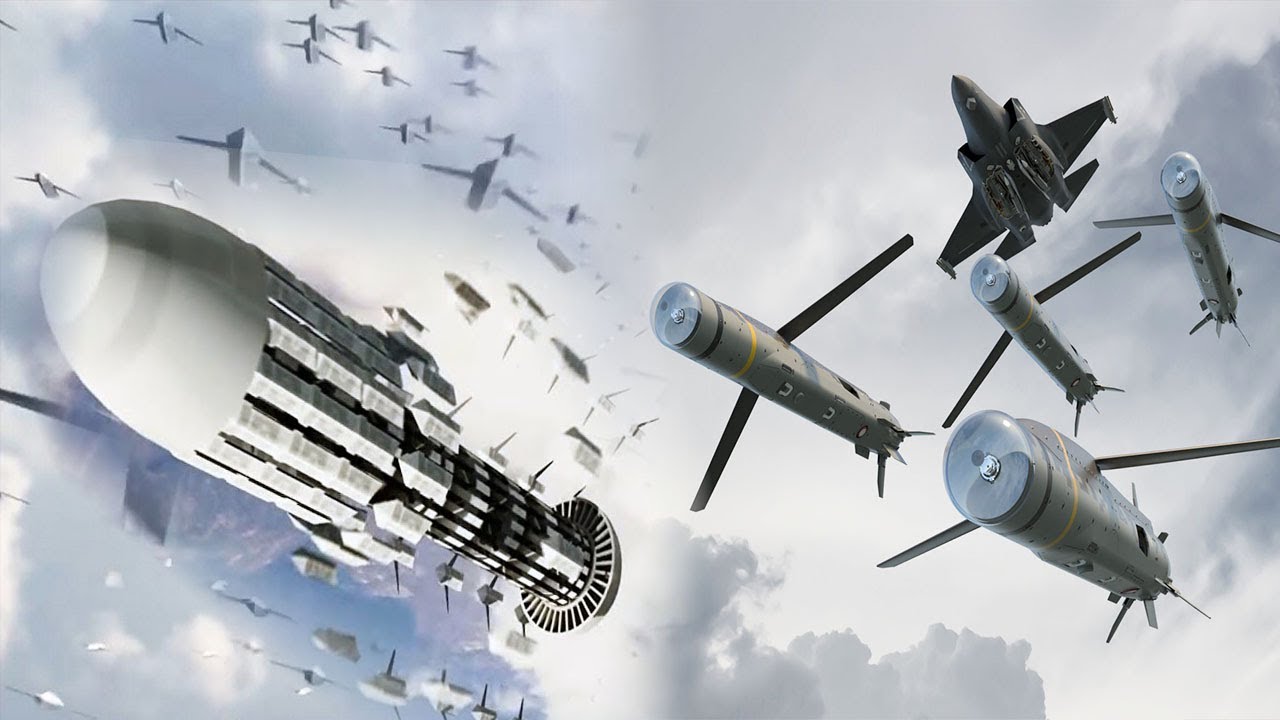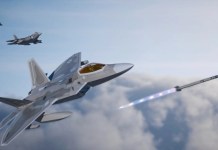In a recent trial, the US Air Force’s Tactical High-Power Operational Responder (THOR) microwave weapon effectively eliminated a “swarm of drones,” showcasing its powerful capabilities.
The Air Force Research Laboratory (AFRL) oversaw the trials at the Chestnut Test Site, Kirtland Air Force Base in Albuquerque, New Mexico.
In a statement, Adrian Lucero, the THOR program manager at the Air Force Research Laboratory’s Directed Energy Directorate, explained that the THOR team successfully conducted a test where multiple drones were flown at the THOR system to mimic a swarm attack.
Despite the drones being new to THOR’s testing repertoire, Lucero highlighted the system’s remarkable performance in swiftly disabling the targets using its non-kinetic, high-speed, High-Power Microwave (HPM) pulses.
“THOR was exceptionally effective at disabling the swarm with its wide beam, high peak powers, and fast-moving gimbal to track and disable the targets,” he added.

According to the AFRL, the demonstration occurred on April 5, although the event details were recently made public.
Captain Tylar Hanson, the Deputy Program Manager of THOR, expressed satisfaction with the weapon’s performance during the swarm engagement, highlighting its exceptional efficiency with a near-continuous system firing.
As an early demonstrator, Hanson expressed confidence in further refining and enhancing the technology to provide enhanced protection for soldiers worldwide.
Over nearly two years, AFRL’s Directed Energy Directorate has been conducting extensive testing of the THOR system.
This new electromagnetic weapon, developed by AFRL, has gained recognition for its innovative design and capabilities, earning the prestigious ‘What’s New in Defense’ 2021 award.
Designed specifically for defending airbases, THOR is poised to make a substantial impact in defense technology. Powered by a simple wall plug, this device harnesses energy to incapacitate drones, effectively offering non-kinetic defense for multiple targets.
Its compact design allows the THOR system to conveniently store in a 20-foot transport container, enabling effortless transportation using a C-130 aircraft.
Setting up and operating the system is a streamlined process that can be accomplished within three hours, and the user interface has been intentionally designed to necessitate minimal training.
The development of this groundbreaking technology has incurred a total expenditure of approximately $18 million.

Importance Of Such Systems
Numerous countries have made substantial investments to strengthen their counter-drone capabilities in response to the sophisticated nature of drone threats.
The United States, in particular, has been actively exploring various technologies to defend against these evolving threats.
One notable advancement is the development of directed energy systems to provide enhanced and more efficient protection for US military personnel worldwide.
While single drones can deliver effective combat impacts like kinetic strikes, surveillance, or artillery spotting, commanders at the Department of Defense are especially worried about large numbers of inexpensive, small craft operating in tandem against ground forces or stationary air bases.
Using artificial intelligence algorithms, it is possible to synchronize dozens of commercial quadcopters into drone swarms. These swarms can be controlled by a single soldier, making them a formidable weapon.

The deployment of inexpensive, easily obtained commercial drones and military unmanned aerial vehicles (UAVs) has already become a defining feature of the 15-month-old Russia-Ukraine war, Europe’s largest conflict in decades.
Yet, traditional air defenses and counter-UAV systems that use guided munitions are challenged by the small size of quadcopters and the large number of potential targets they present.
But, the THOR system is an electronic warfare weapon that can jam, disrupt, or even destroy unmanned aerial vehicles (UAVs). The system uses microwaves to interfere with the UAVs’ electronic systems, making them useless.
Although the USAF refused to identify how many or what kind of UAVs were used in the latest test due to security concerns, the service contends the microwave weapon system successfully drove the swarm away.
In addition to the THOR weapon system, the US has plans to deploy the Leonidas high-power microwave weapon, which effectively neutralizes drones by disabling their electronic systems.
Moreover, BlueHalo, a defense contractor, was recently awarded a significant $46-million contract to produce a 20-kilowatt anti-drone high-energy laser intended to be mounted on infantry squad vehicles.
- Contact the author at ashishmichel(at)gmail.com
- Follow EurAsian Times on Google News




